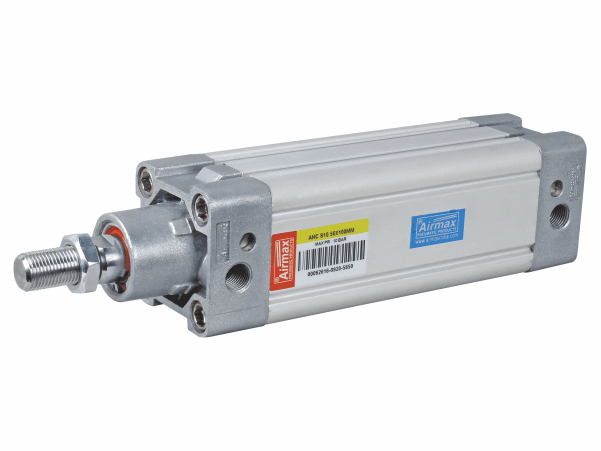Pneumatic cylinders are one of the most widely used components in automation systems, and they are responsible for converting energy into linear motion. A pneumatic cylinder operates by using compressed air to produce a force that moves a piston inside a cylinder. Pneumatic cylinders are divided into two main categories, single-acting and double-acting. This article will focus on double acting pneumatic cylinders, their components, working principles, and applications.
What is a double acting pneumatic cylinder?
A double acting pneumatic cylinder is a type of cylinder that uses compressed air to move a piston back and forth in a linear motion. Unlike a single-acting cylinder, which relies on air pressure to move in only one direction and uses a spring or other mechanism to return to its starting position, a double-acting cylinder can move in both directions. This makes double-acting cylinders ideal for applications that require precise control of motion, such as machine tools, robotics, and industrial automation systems.
Components of double acting pneumatic cylinder
A double acting pneumatic cylinder consists of several components that work together to produce linear motion. These components include:
- Cylinder barrel: The cylinder barrel is the outer casing that houses the piston and the seals.
- Piston: A piston is a cylindrical object that fits inside the cylinder barrel and moves back and forth in a linear motion.
- Seals: The seals are located on both ends of the piston and prevent air from escaping around the piston.
- Rod: The rod is attached to the piston and extends through one end of the cylinder barrel. The rod is used to attach the cylinder to other components and to transfer the motion produced by the piston to the external load.
- End caps: The end caps are located at the ends of the cylinder barrel and are used to secure the seals and the rod.
- Ports: The ports are located in the end caps and are used to connect the cylinder to a source of compressed air.
Working Principle of double acting pneumatic cylinder
The working principle of a double acting pneumatic cylinder is relatively simple. When compressed air is supplied to one of the ports, it pushes the piston in one direction, and when the air supply is switched to the other port, it pushes the piston in the opposite direction. The motion produced by the piston is transferred to the external load through the rod. The direction of motion of the piston is controlled by a 4-way directional control valve, which is used to switch the air supply between the two ports.
Applications of double acting pneumatic cylinder
double acting pneumatic cylinders are used in a wide range of applications, including:
- Machine tools: Pneumatic cylinders are used in machine tools, such as lathes, milling machines, and drilling machines, to control the motion of the cutting tool or the workpiece.
- Robotics: Pneumatic cylinders are used in robotics to control the motion of the robot arm or other components.
- Industrial automation: Pneumatic cylinders are used in industrial automation systems to control the motion of conveyor belts, assembly lines, and other components.
- Material handling: Pneumatic cylinders are used in material handling systems, such as
- loading and unloading equipment, to move objects and control their motion.
- Automotive industry: Pneumatic cylinders are used in the automotive industry to control the motion of various components, such as door locks, seat adjusters, and steering mechanisms.
- Aerospace industry: Pneumatic cylinders are used in the aerospace industry to control the motion of various components, such as landing gears, cargo doors, and wing flaps.
- Medical equipment: Pneumatic cylinders are used in medical equipment, such as hospital beds and surgical tables, to control the motion of various components and ensure patient safety and comfort.
- Packaging and labeling: Pneumatic cylinders are used in packaging and labeling machines to control the motion of various components, such as grippers and dispensers, and ensure accurate and efficient packaging and labeling.
In conclusion, double acting pneumatic cylinders are essential components in many industrial applications, providing precise and reliable control of linear motion. Understanding their components, working principles, and applications can help engineers and technicians select the right cylinder for their specific needs and ensure optimal performance and safety in their automation systems.


